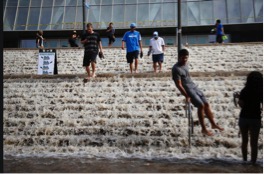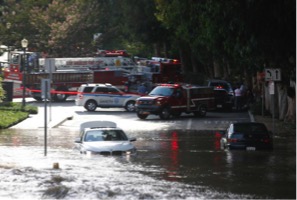The State of U.S. Drinking Water Infrastructure: Challenges and Solutions
Back in 2013, the American Society of Civil Engineers gave the U.S. drinking water infrastructure a troubling grade of "D." Many of our pipes and water mains are now well past their expected lifespan, with some dating back over a century. The country has more than one million miles of water pipes, yet the condition of many remains unknown or poorly maintained.
Impact With over 264 million people relying on this aging system, the consequences of failing infrastructure can be severe. When large water pipes break, it can cause major disruptions in water supply, damage to homes and businesses, and even threaten other critical systems like electricity and transportation. However, these visible breaks only account for a small portion of the total water loss. Most of the water is lost underground through smaller leaks that go unnoticed for years. According to the Water Research Foundation, utilities experience an average of 0.21 to 0.27 pipe breaks per mile annually. These failures not only waste water but also pose health risks if contaminants enter the system.
Costs The financial burden of maintaining and replacing this aging infrastructure is staggering. The American Water Works Association (AWWA) estimates that replacing all existing pipes could cost over $1 trillion in the coming decades. Over the next 25 years, the total cost of expanding and repairing both drinking and wastewater systems could reach as high as $2 trillion. Additionally, around 250,000 water mains break each year, and an estimated 2 trillion gallons of water are lost annually due to leaks and breaks. A 2012 study from Utah State University found that water utilities spend between $6,000 and $7.5 million per incident, with nearly half of those costs tied to property damage claims.
Funding Crisis A major obstacle to improvement is the lack of funding. According to ASCE, federal funding for water infrastructure dropped significantly between 2008 and 2012, totaling just $6.9 billion—about $1.38 billion per year. Over 20 years, that’s only 8% of what the EPA identified as necessary. With so little investment, the risk of a full-scale water infrastructure crisis grows every day.
Solutions The Environmental Protection Agency (EPA) is working to improve sustainability and resilience in water systems across the country. One effective strategy is rehabilitating existing infrastructure instead of replacing it entirely. HJ3 offers innovative solutions using carbon fiber technology to reinforce and extend the life of aging pipes. Their patented CarbonSeal system has been proven to reduce repair costs by up to 70%, while ensuring compliance with potable water standards. This approach not only saves money but also minimizes disruption and environmental impact.
If you're facing issues with underground pipes and want to explore cost-effective, long-term solutions, contact HJ3 today to learn more about their advanced reinforcement systems. Don’t let aging infrastructure compromise your water supply—act now before it's too late.


Car Door Central Lock,Central Door Controller,Car Central Lock Actuator,Car Central Locking System
WENZHOU TIQNIU ELECTRICAL CO.,LTD. , https://www.tianqiuelectrical.com